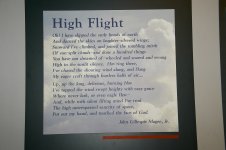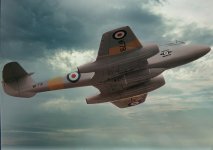Andy Adcock
Worst person on Birdforum

Out of interest, would ejection for both crew, be initiated by the instructor in a trainer or would they be independent of each other?

All ejection seats act independently but some aircraft also have a command ejection system in case one crew member is disabled by something. I would have thought such systems would work both ways but I don't offhand know whether the Hawk has one.Out of interest, would ejection for both crew, be initiated by the instructor in a trainer or would they be independent of each other?



At 2.54 running time, something (a strop?) drops off the aircraft. Not one of the USAF's better 'aid to the civil power' days...Oooops
Addenbrooke's HLS rearranged by the USAF. Watch the lift off.


Whatever, it's put the HLP out of action for a bit.At 2.54 running time, something (a strop?) drops off the aircraft. Not one of the USAF's better 'aid to the civil power' days...
MJB
The matting comes into its own when the grass is waterlogged. I've seen a Sea King bogged down after delivering a casualty in Inverness... It needed airbags inflated underneath it before it could lift off.Given that the Osprey landed on the grass and I've seen ambulance helicopters operate from grass any number of times, I really have to wonder why they aren't just using the same site with the matting cleared away.
John
Yes, it said on the BBC East News tonight that the air ambulance will use the grass. Assuming this is correct, presumably the matting is mainly to deal with wet conditions, which aren’t happening at the moment - IIRC the local weather forecast said only 2.9mm of rain so far in April.The matting comes into its own when the grass is waterlogged. I've seen a Sea King bogged down after delivering a casualty in Inverness... It needed airbags inflated underneath it before it could lift off.
MJB

Not the plane to much but has anyone seen a contrail like this that stretches across the whole wing?
Yes. As you can (just) discern from the full-size image, there are tiny wisps of cloud, which could indicate that the air is supersaturated with tiny water droplets, but clouds haven't fully formed because the air is relatively free of fine particulates such as dust. However, an aircraft slicing through this compresses the air passing over and under the wings, condensing the water droplets into larger drops, which thus form a kind of cloud. You sometimes see this effect from a window seat when your aircraft is passing through supersaturated air, particularly on finals where flaps are extended, adding to the compression/condensing effect; sometimes the effect is a flickering between the wing being obscured and being visible.Not the plane to much but has anyone seen a contrail like this that stretches across the whole wing?
I can do you an A380 manoeuvring under cloud on its way into Heathrow, photographed while I was looking for Southern Emerald Damselflies. Condensation off an A380..... wow!Hi,
Fascinating photograph!
I've only seen condensation above/aft of the wing with fighter jets doing hard turns.
On one occasion, I saw condensation around an Airbus Beluga's fuselage when it turned towards Hamburg-Finkenwerder airport while flying between low-hanging clouds. It was a bit like a halo around the part where the large fuselage reaches its greatest diameter. I googled for images of this effect, but couldn't find any ... perhaps it needs very specific conditions to occur and thus is difficult to capture.
Of course, these effects occurr during manoeuvring at low altitude, not in straight flight at high altitude, and don't involve freezing of the condensation as with traditional contrails, so your photograph probably shows something different!
Regards,
Henning
